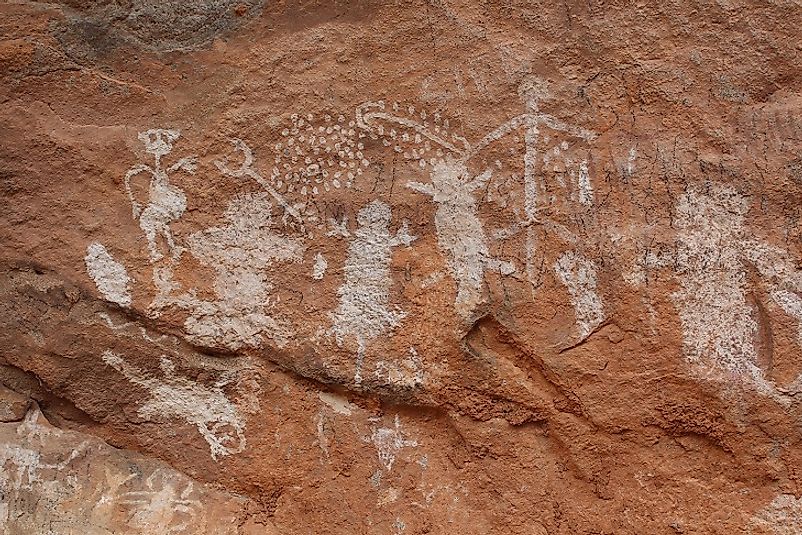Chongoni Rock Art Of Malawi

5. Human History in the Central Malawi Highlands -
The central highlands of Malawi have been inhabited by humans for thousands of years. In fact, archaeologists have found artifacts that date back to the Late Pleistocene era (also known as the Stone Age), the end of which dates back to 9700 BC. This archaeological evidence suggests that the central highlands were first inhabited by the BaTwa hunter-gatherers, who are believed to be responsible for the rock art found here. Later, during the Iron Age, ancestors of the Chewa tribe began to practice agriculture in this area. They practiced rock art by using local, white clay. This group continued to practice rock art well into the 1900’s. Over the years, this region has also been inhabited by the Ngoni tribe, the Nyau tribe, and eventually European missionaries and colonizers.
4. The Rock Art Sites of Chongoni -
The Rock Art of Chongoni encompasses an area of 48.8 square miles, and includes 127 identified sites. These are all located high in the plateau of central Malawi and represent the most concentrated instances of rock art in Central Africa. It has been protected as a UNESCO World Heritage Site since 2006. Many of the symbols found here are associated with the lives of women, funeral practices, and rain making. They continue to hold cultural importance for the Chewa peoples. Additionally, this area is home to several ceremonial sites where religious rituals are performed. This rock-art is important because it portrays the history and development of modern humans and their ancestors. It provides a timeline of life in the central highlands of Malawi, beginning with hunting and gathering and moving to agriculture. Additionally, it documents the arrival and invasions of both the Ngoni and European peoples.
3. Artistic and Archaeological Uniqueness -
This art is unique because it shows stylistic changes over the years. For example, the original BaTwi inhabitants used red paint to tell their stories whereas the Chewa ancestors used white clay. The rock art here is valuable to world heritage because it is a reflection of ancient human art which tells stories and spiritual traditions that continue to influence modern-day culture in this area. In the Chewa art, individuals wearing masks are clearly noted. These same masks are used today in Chewa rituals. Additionally, the rocky areas provide shelters where traditional girls’ initiation rituals continue to take place, a practice known as Chinamwali.
2. Natural Surroundings, Sights, and Sounds -
The rock art is located in the central highlands of Malawi, an area of forests and granite hills on top of a plateau. Beyond the forested and rocky protected area of Chongoni is open grassland. The nearest town is Dedza, which reaches an altitude of 5,200 feet above sea level.
1. Threats and Conservation Efforts -
A management plan to preserve the Rock Art Area of Chongoni has been created, falling under under the Monuments and Relics Act of 1990. Unfortunately, the government of Malawi lacks the financial resources needed to ensure that the site is properly managed. Throughout Malawi, deforestation has been a major environmental threat. The same is true for this World Heritage Site. Increasing population, agricultural cultivation, and livestock grazing have resulted in decreased forest coverage. Aside from negatively affecting the native plant and animal species of this area, the forests also serve to protect the rock art in this area. Without it, the art may be exposed to the elements and gradually worn away. Additionally, the forests help keep rocks and plants in place. As deforested areas grow, the risk of erosion increases which means valuable rocks and soil could be washed away.











